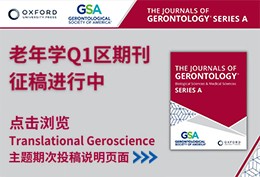当前位置:
X-MOL 学术
›
Environ. Sci. Technol.
›
论文详情
Our official English website, www.x-mol.net, welcomes your
feedback! (Note: you will need to create a separate account there.)
Transcriptomic and Functional Analyses on the Effects of Dioxin on Insulin Secretion of Pancreatic Islets and β-cells
Environmental Science & Technology ( IF 11.3 ) Pub Date : 2017-09-07 00:00:00 , DOI: 10.1021/acs.est.7b02830 Keng Po Lai 1 , Hin Ting Wan 2 , Alice Hoi-Man Ng 2 , Jing Woei Li 1, 3 , Ting Fung Chan 3 , Chris Kong-Chu Wong 2
Environmental Science & Technology ( IF 11.3 ) Pub Date : 2017-09-07 00:00:00 , DOI: 10.1021/acs.est.7b02830 Keng Po Lai 1 , Hin Ting Wan 2 , Alice Hoi-Man Ng 2 , Jing Woei Li 1, 3 , Ting Fung Chan 3 , Chris Kong-Chu Wong 2
Affiliation
In this study, transcriptomic and Ingenuity Pathway Analysis (IPA) underlined that an ex-vivo TCDD treatment (0.1 nM) stimulated insulin-release in mouse pancreatic islets via the effect on the Akt-mTOR-p70S6K, AMPK and ERK1/2 pathways. Functional studies using both ex-vivo islets and the mouse β-cell-line (Min-6) validated the stimulatory effects of TCDD (0.1 and 1 nM) on basal-insulin secretion. At 0.1 nM TCDD treatment on Min-6, western blot analysis showed activation of ERK1/2 and decreased expression of pyruvate dehydrogenase kinase (PDK). A reduction of PDK expression is associated with an increase of pyruvate dehydrogenase flux. This observation was supported by the detection of significantly higher cellular ATP levels, an increase of glucose-stimulated-insulin-secretion (GSIS), and an inhibition of the AMPK pathway. At 1 nM TCDD treatment on Min-6, significant inhibitions of the Akt-mTOR pathway, cellular ATP production, and GSIS were evident. The experimental studies in Min-6 supported the IPA of transcriptomic data in pancreatic islets. Collectively, TCDD treatment caused an elevated basal-insulin release in both islets and β-cell cultures. Moreover, our data revealed that the modulation of the Akt-mTOR-p70S6K, AMPK and ERK1/2 pathways might be an important component of the mechanism for the TCDD-perturbing effects on ATP production in β-cells in affecting insulin secretion.
更新日期:2017-09-07














 京公网安备 11010802027423号
京公网安备 11010802027423号